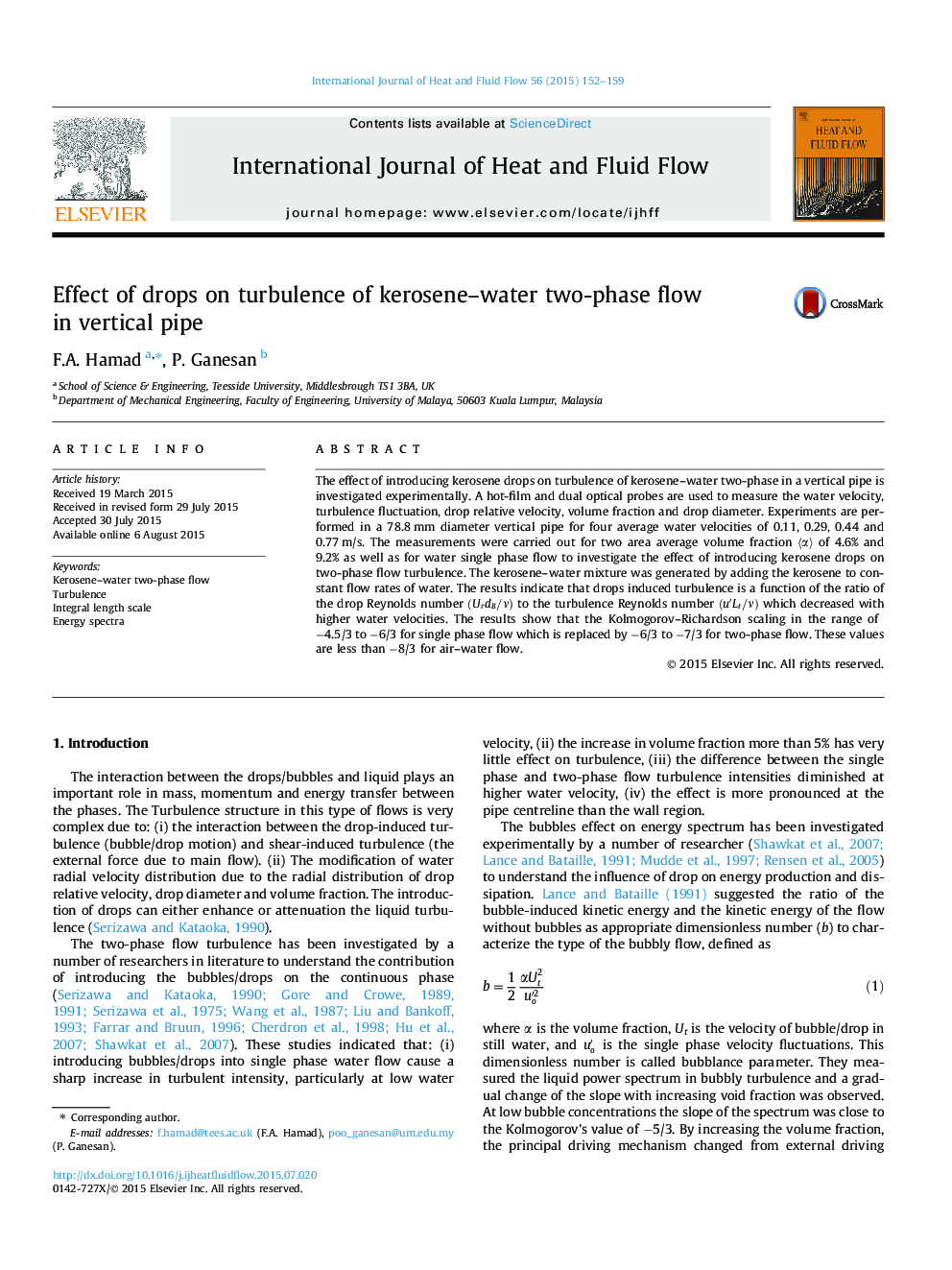| Article ID | Journal | Published Year | Pages | File Type |
|---|---|---|---|---|
| 654991 | International Journal of Heat and Fluid Flow | 2015 | 8 Pages |
•The effect of introducing kerosene drops on turbulence of kerosene–water flow in a vertical pipe is studied.•Introducing drops has a significant effect on turbulence enhancement at low average water velocities due to the high slip velocities and large drops diameters but it is decreased with higher velocities and even attenuated at high values.•The Kolmogorov–Richardson scaling is in the range of −4.5/3 to −6/3 for single phase flow which is replaced by −6/3 to −7/3 for two-phase flow.
The effect of introducing kerosene drops on turbulence of kerosene–water two-phase in a vertical pipe is investigated experimentally. A hot-film and dual optical probes are used to measure the water velocity, turbulence fluctuation, drop relative velocity, volume fraction and drop diameter. Experiments are performed in a 78.8 mm diameter vertical pipe for four average water velocities of 0.11, 0.29, 0.44 and 0.77 m/s. The measurements were carried out for two area average volume fraction 〈α 〉 of 4.6% and 9.2% as well as for water single phase flow to investigate the effect of introducing kerosene drops on two-phase flow turbulence. The kerosene–water mixture was generated by adding the kerosene to constant flow rates of water. The results indicate that drops induced turbulence is a function of the ratio of the drop Reynolds number (UrdB/ν)(UrdB/ν) to the turbulence Reynolds number (u′Lt/ν)(u′Lt/ν) which decreased with higher water velocities. The results show that the Kolmogorov–Richardson scaling in the range of −4.5/3 to −6/3 for single phase flow which is replaced by −6/3 to −7/3 for two-phase flow. These values are less than −8/3 for air–water flow.
